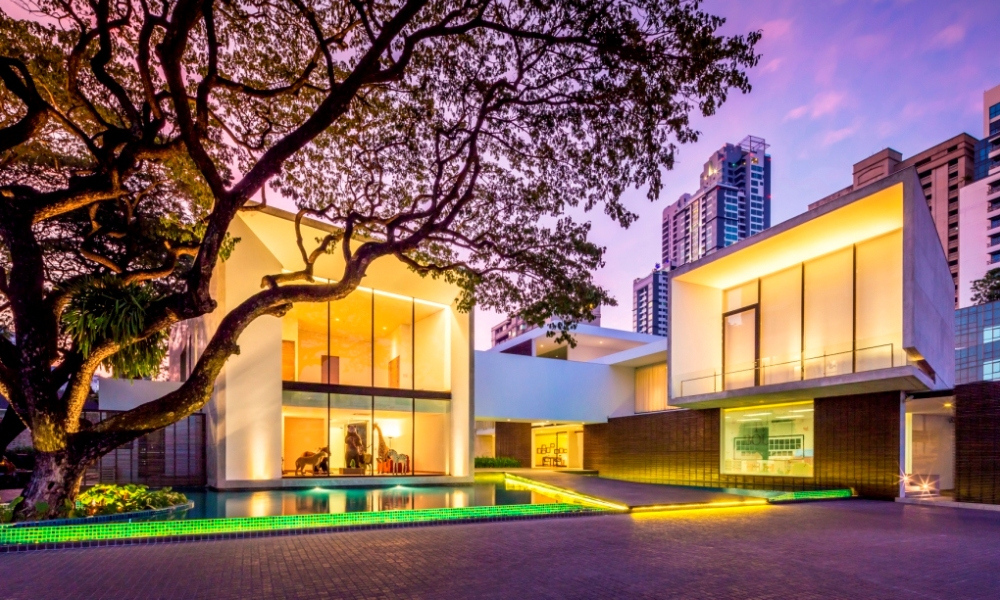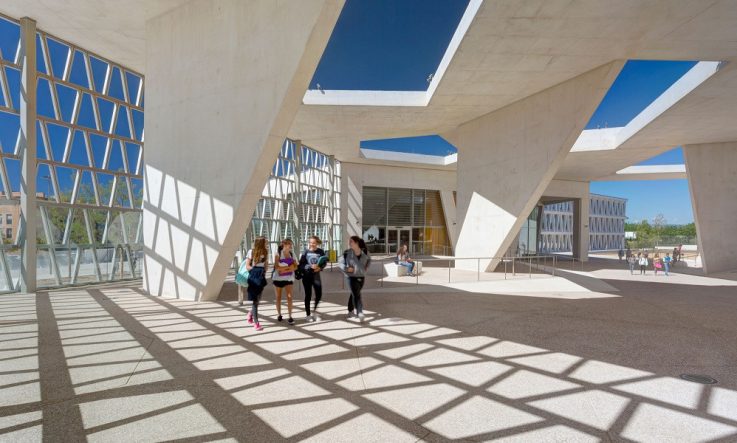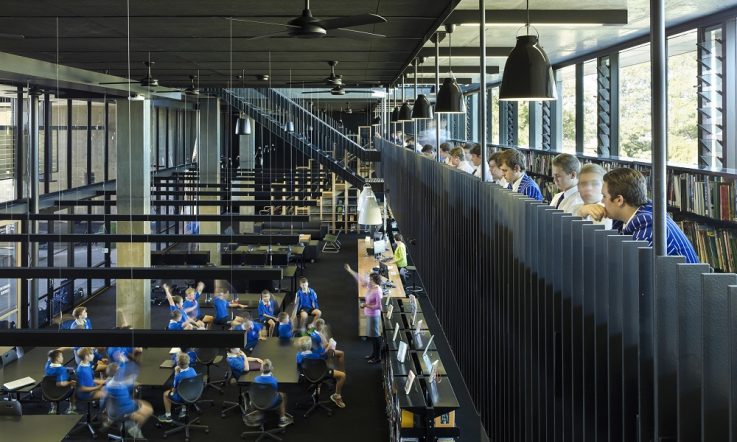Throughout November, Teacher is exploring the theme of learning spaces. To kick things off, we take a look at the latest developments in school design, showcased this week at the World Architecture Festival in Singapore.
The Ballet School in St Petersburg, Russia, has just been named the winner of the School Buildings category at this year's World Architecture Festival.
School design teams around the world face different challenges - from providing basic sanitation facilities and cool spaces in warm climates, to energy-efficient elements. The shortlisted projects were:
The Ballet School, St Petersburg, Russia
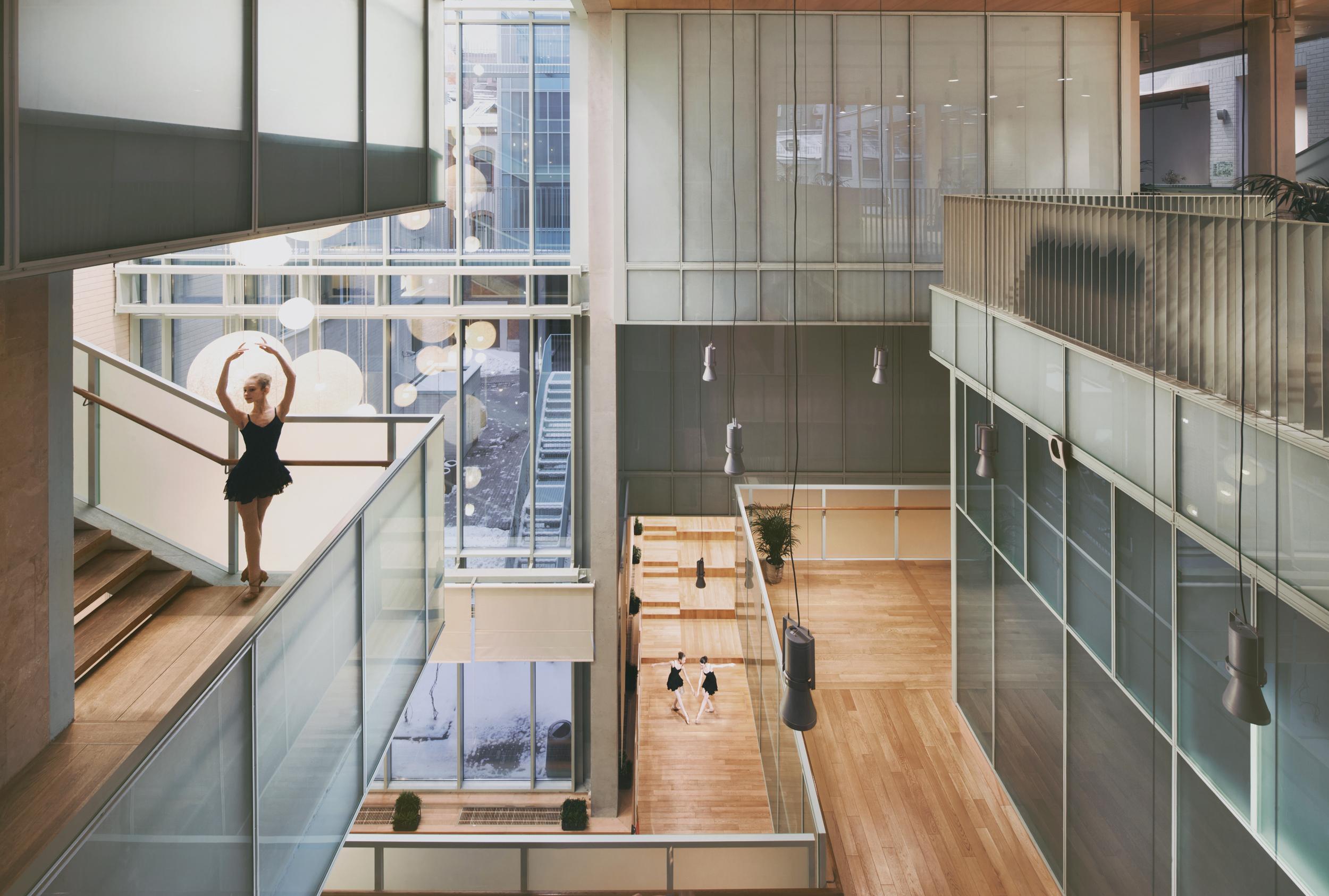
Lead Architect: Studio 44 Architects
The Ballet School includes two new buildings – teaching and dormitory blocks. The hall of residence accommodates 135 students and a medical centre; the teaching block contains two ballet classes, a physical training centre and administration. Between the new buildings is an atrium, where recreation spaces co-exist with 12 ballet classes. A system of stairs and transit link all of the premises.
The walls of the recreation spaces and ballet classes are realised in semitransparent glass, which serves to provide more natural light into the building. A QR-code bás-relief with locutions about the art of dance have been added to the entrance of the front building. A rare example of surviving wooden housing located within the site has been thoroughly restored and converted into a media library and a Ballet School museum.
Baldivis Secondary College, Perth, Australia
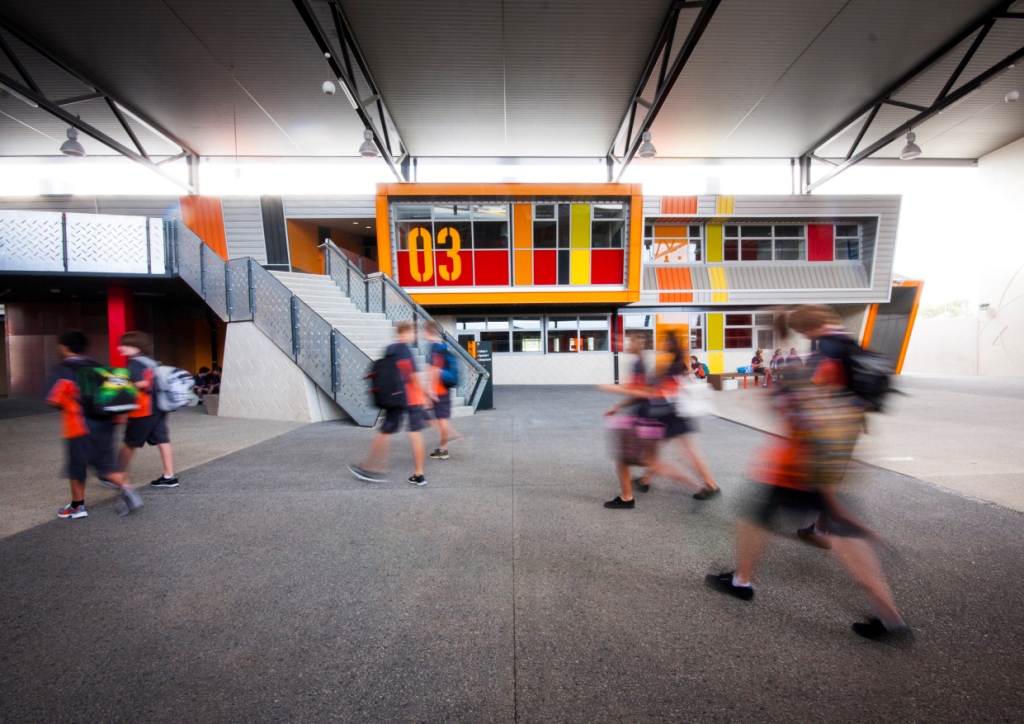
Lead Architect: JCY Architects & Urban Designers
The centre spine of this school is a 120-metre long undercover space called the Learning Workshop which provides direct access to learning and social areas – the library, student services, teaching block and cafe. A performing arts facility and gymnasium act as ‘bookends'. Design elements include a café roof linking the upper level classrooms that also forms an auditorium seating space. The team behind the project say siting the main learning building under the Learning Workshop roof allowed teaching spaces to ‘spill in or spill out from the classroom into the undercover area', giving flexibility and an option for lectures, plays and exhibitions to be hosted outside the classroom. The project also includes water harvesting and wind turbines, and was designed in consultation with parents, the community and feeder schools.
Bethel Secondary School Project, Gourcy, Burkina Faso
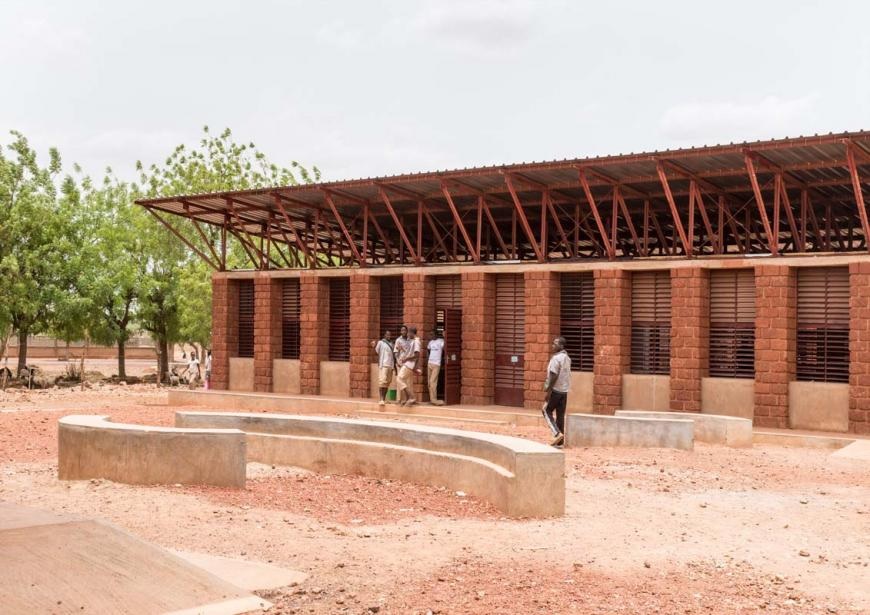
Lead Architect: Article 25. Photograph by Grant Smith.
The project submission for Bethel Secondary School notes that, ‘Without an adequate level of education, Burkina Faso lacks the capacity to break out of the cycle of poverty, and poor school infrastructure is hampering development.' Challenges to overcome include overcrowded classrooms and indoor temperatures reaching 40 degrees centigrade. The poor learning environment has had a knock-on impact on attendance, particularly among girls. Architects Article 25 incorporated a large raised roof to provide ventilation to the classroom and shade to external surfaces. Blackboards on the gables allow for outdoor learning in the shade. Another key development was improved sanitation facilities with separate toilet blocks for boys and girls. It is expected this new design will be duplicated across the country.
Burntwood School, London, England
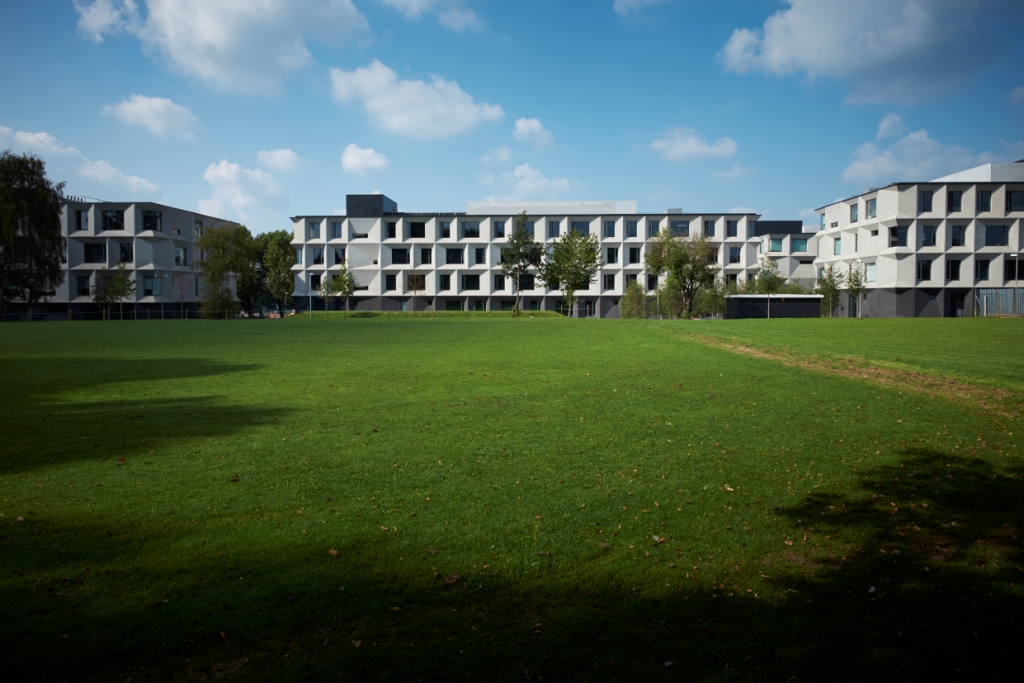
Lead Architect: Allford Hall Monaghan Morris. Photograph by Tim Soar and Rob Parrish.
The design brief for this school was to retain an assembly hall and swimming pool from the 1950s campus and demolish the remaining buildings. Four new teaching pavilions, a sports hall and performing arts building were combined with the older spaces to create a modern campus with lawns, squares and a central pedestrian area. Design elements include powered doors to all main entrances and wheelchair accessible toilets on each level to ensure equal access. The design team used an internal colour scheme that helps navigation without the need for extensive signage.
Gammel Hellerup High School, Copenhagen, Denmark
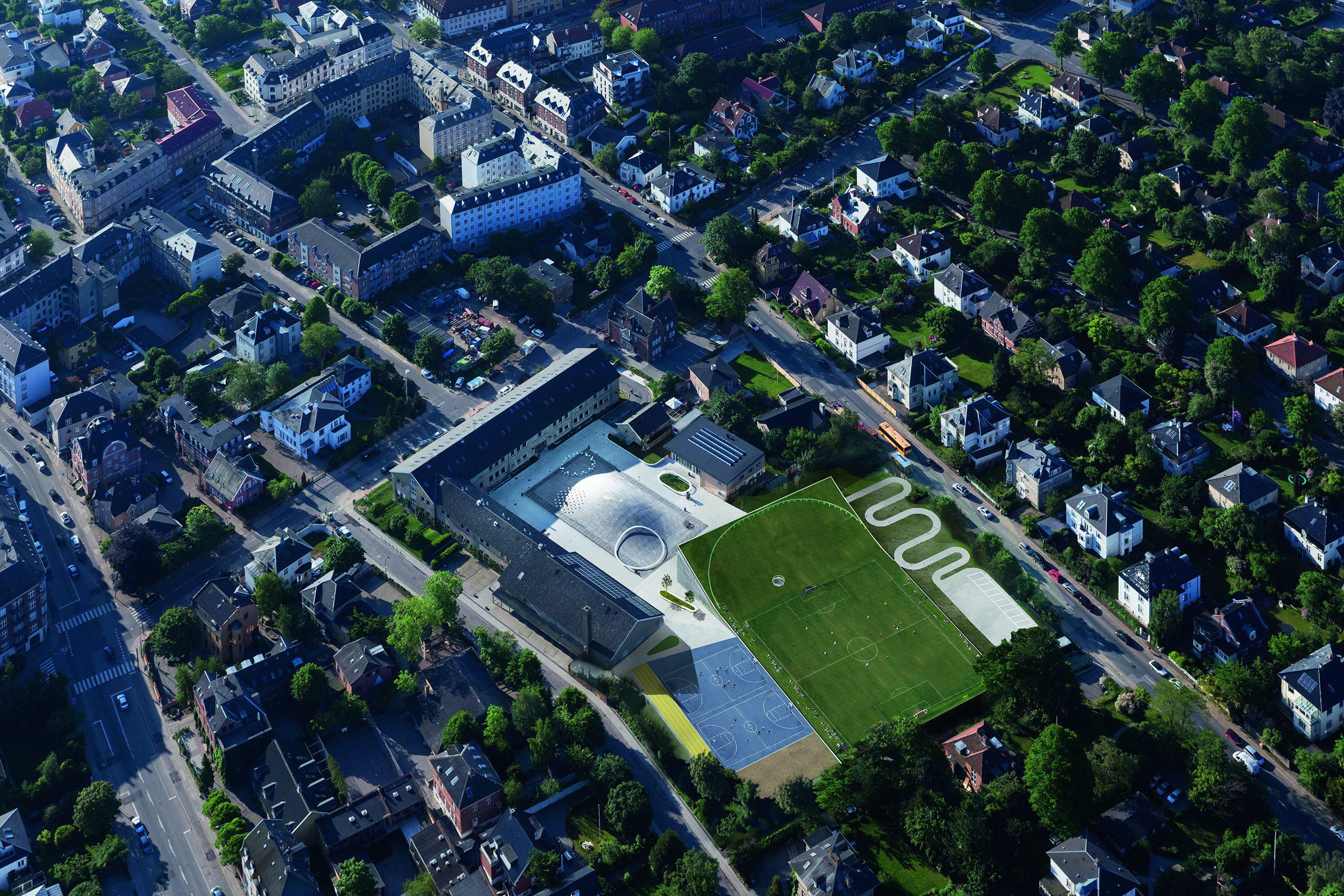
Lead Architect: BIG - Bjarke Ingels Group
The Gammel Hellerup School consisted of two projects – a new multi-purpose hall and a new classroom building. The school outgrew its old gym facilities and wanted to replace it with a multi-functional space for sport, graduation ceremonies and social events. Architects BIG came up with a subterranean sports hall (five metres below ground in the centre of the school courtyard, with a playing field on top) that would also act as a connection point between the different buildings. The curved design was inspired by the physics of a handball being thrown. Solar technology meets 80 per cent of the school's electricity needs and geothermal heating covers 30 per cent of the energy for the school's hot water.
Ivy Bound International School, Bangkok, Thailand
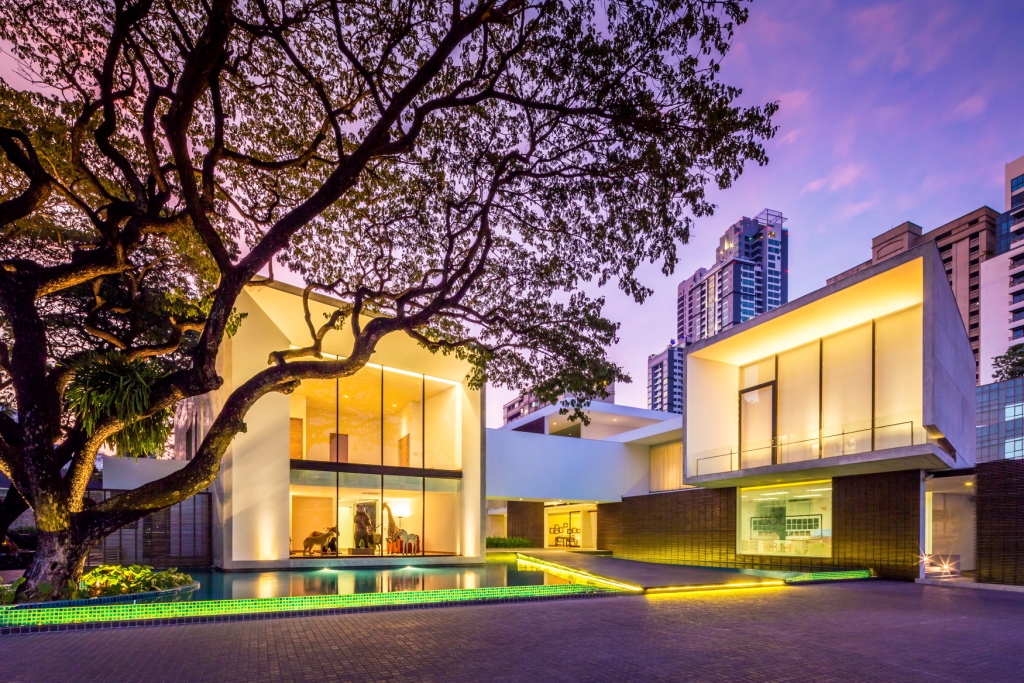
Lead Architect: eco.id Architects. Photograph by Mr. Banharn Nambuddee.
Ivy Bound International School is a new school for early learning that opened its doors in May 2014. The aim of the design was to give a feeling of the 'free-flowing and airy atmosphere of a modern gallery house'. Despite its location in a dense, bustling city, architects wanted to create a calm, green environment for the students (aged birth to seven). The site was originally a residential house dominated by six old rain trees with large root systems. The new design – inspired by play blocks – fitted the school around these existing 'living sculptures'. Other elements include a wide corridor alongside classrooms acting as a gallery for student artwork.
Kollaskolan, Kollastaden, Sweden
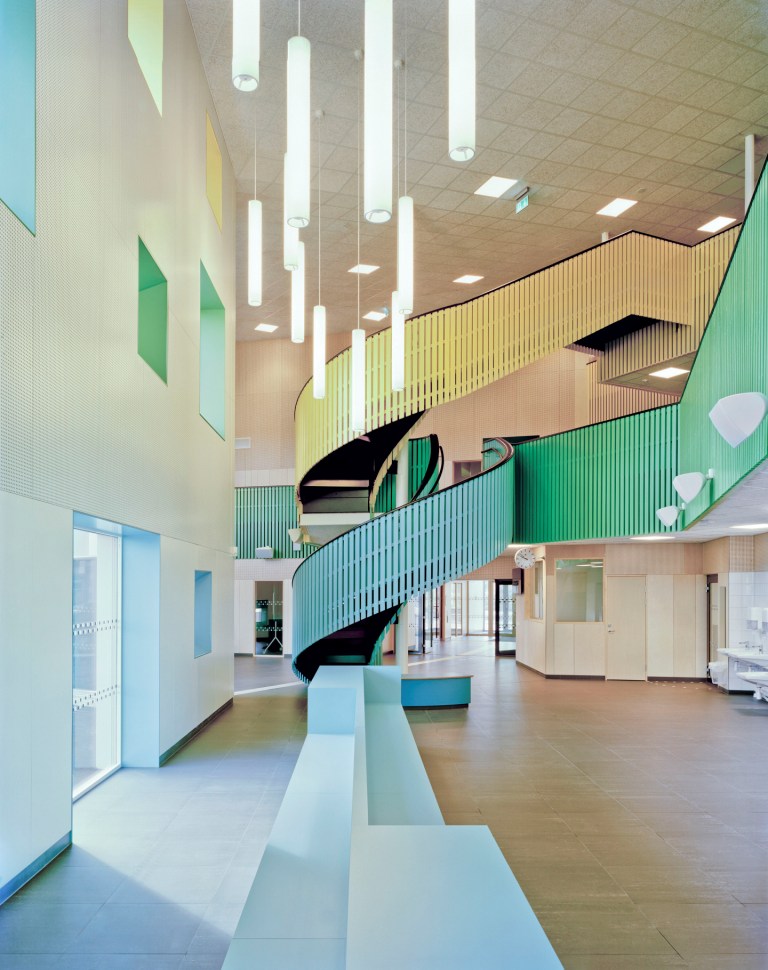
Lead Architect: Kjellgren Kaminsky Architecture
This new school has a main building, sports block and additional smaller buildings all in the 'passive-house' style – a building technique focusing on energy efficiency. In their submission, the design team explains, 'The school utilises the existing energy within the building generated from people and household appliances, which then reduces the overall heating requirements of the building.' The main entrance hall has an atrium, which leads into communal areas and public function rooms. The wings of the building house permanent classrooms – away from the public areas to provide more privacy and less disruption.
Penleigh and Essendon Grammar School, Middle Girls School, Melbourne, Australia
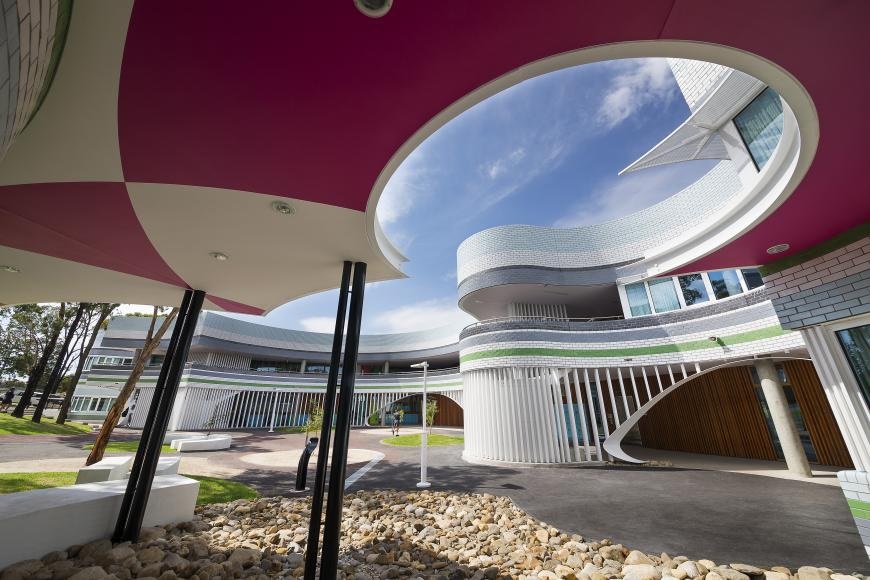
Lead Architect: McBride Charles Ryan. Photograph by John Gollings.
This middle school project is the final of three phases of development on the campus and combines new and refurbished spaces. The form is derived from a trace of the Mandelbrot Set (a series of patterns that can be generated based on fractal mathematics). The design team behind the project says, 'The Mandelbrot Set offers almost endless formal adaption; a metaphor writ large for the endless possibility of intellectual exploration and the human imagination ... It is a complex form that reveals and conceals views, contains and describes interior and exterior space.' Educators wanted interconnected classrooms and collaborative, social spaces.
Shunde Primary School, Guangdong, China
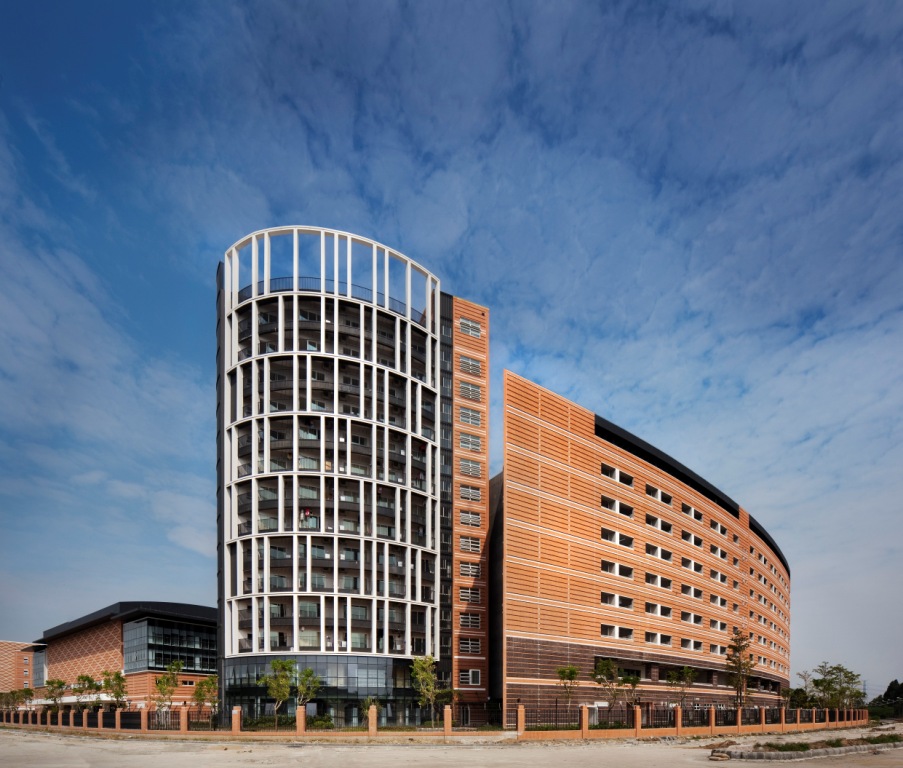
Lead Architect: K2LD Architects. Photograph by Patrick Bingham-Hall.
This campus consists of four main components: a 15-storey tower that is a staff residence, an eight-storey two-wing student dormitory; a five-storey academic block; and a four-storey admin block. Facilities include a library, canteen, swimming pool, multi-purpose hall and running track. This is a new school in a relatively new town, so the design team wanted to create a strong identity for the campus that would bring students together and attract future enrolments. The academic campus at the centre of the site is designed around the morning assembly and activities like sports day, large-scale student performances and the graduation ceremony.
TAC (Tarsus American College) SEV New Campus, Mersin, Turkey
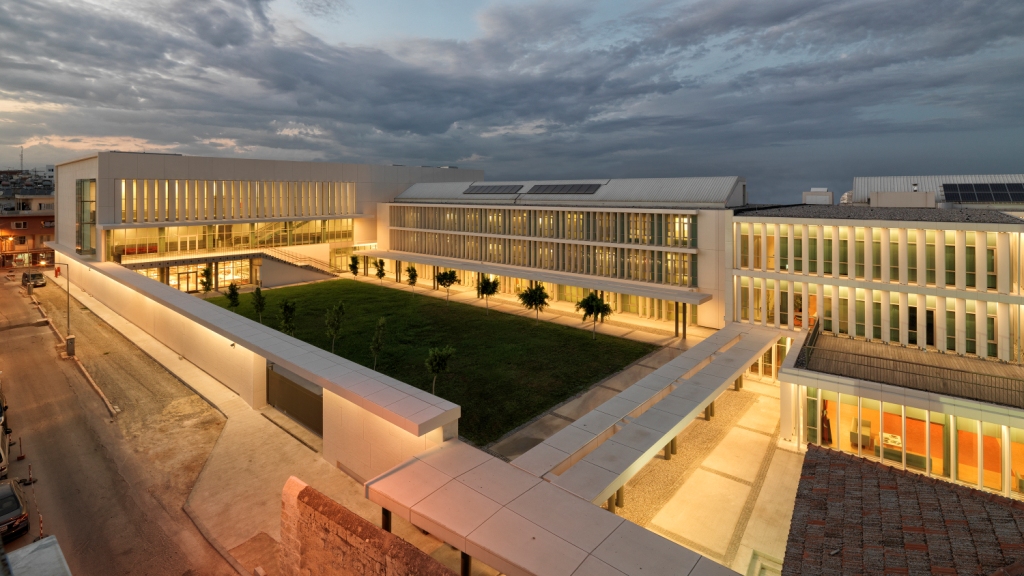
Lead Architect: Erginoğlu & Çalışlar. Photograph by Cemal Emden.
The new campus of TAC SEV sits across from the existing Tarsus American College (TAC). The Mediterranean climate required a focus on cooling the building rather than heating it. Trees, sunblinds and canopies were all included to help with this challenge. The south roofs of the building also feature solar panels. The campus consists of three blocks – a school building, dormitory and multipurpose facility incorporating a gym, cafe, hall and bomb shelter. Classrooms in the school building are designed to take advantage of natural light from the north. The dorms are triple rooms where each student is given the same area of private space.
Te Kura Kaupapa Maori o Ngati Kahungunu o Te Wairoa, Wairoa, New Zealand
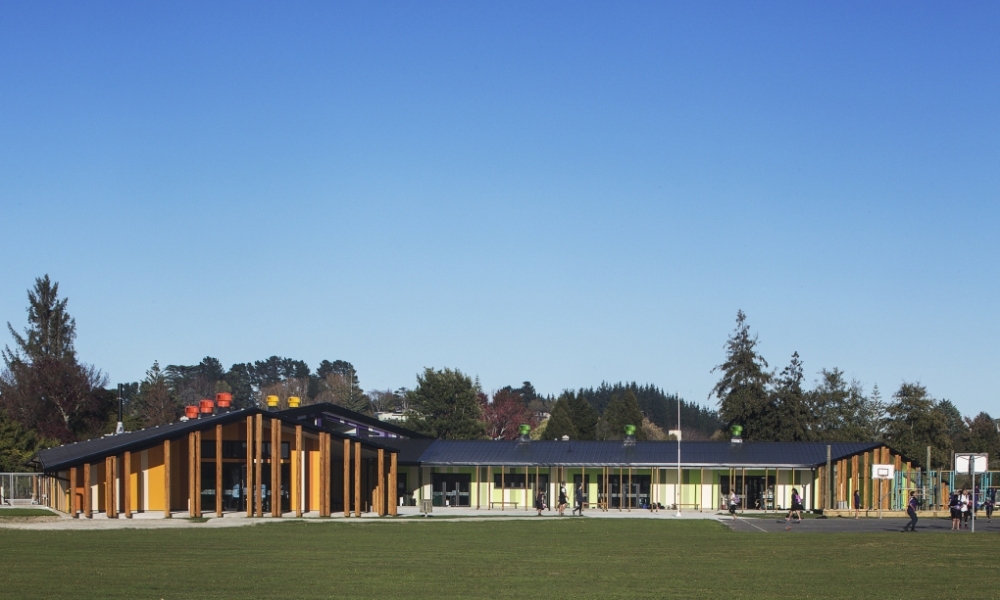
Lead Architect: RTA Studio
Existing 1960s buildings at this Maori-language immersion school were removed to make way for a modern learning centre that maintained its links with the past, ties to the community, and reflected the local culture and landscape. It includes open plan learning spaces for 50 to 60 students and flexible teaching spaces designed to complement different pedagogical practice. The building was planned to orient along ley lines significant to the community. For example, the eastern wing housing the senior students, library and workshop, is oriented toward Whakapunake – a mountain with cultural significance, while the west wing (admin and staff area, junior students, kitchen) is oriented towards the local Maori meeting house – Takitimu Wharenui.
Waseda University Senior High School, Auditorium, Tokyo, Japan
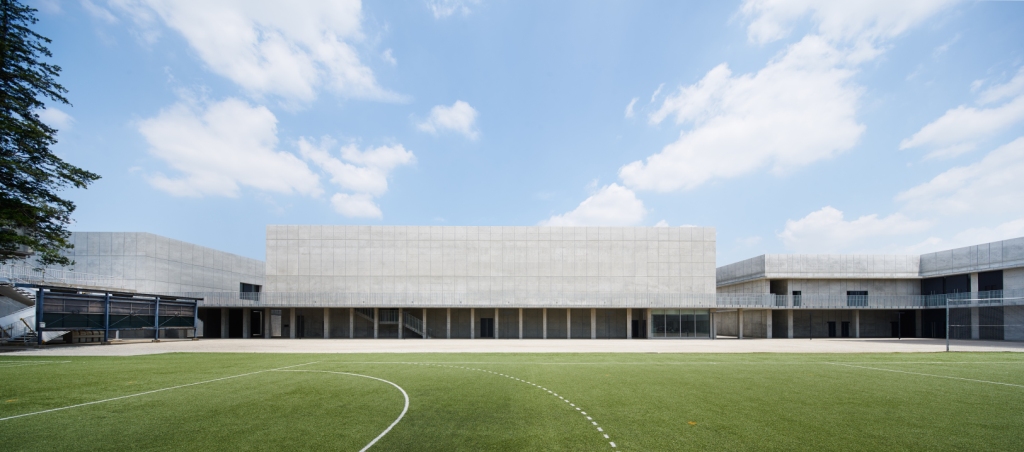
Lead Architect: Nikken Sekkei
The school is in a suburban area with parks and green spaces. The existing 40-year-old auditorium and parts of the campus were damaged by the east Japan earthquake in 2011.The new auditorium has seating for 1500 and is the heart of the school campus. Concrete was used for acoustic and structural reasons. The design process included 3D simulations to test the acoustics and lighting.
The design team explains, 'The triangular apertures of walls and ceiling [not only absorbs sound] but also slows diffraction with double walls to diffuse sound, reflecting it in a variety of directions. ... The finishes are a mixture of more than 10 processes including – grinding, bush hammered, jet-blast, and scratching.'
Stay tuned: Continuing our learning spaces theme for November, architect Peter Lippman explores research relating to collaborative school spaces next week.
To find out more about the World Architectural Festival, click the link.
